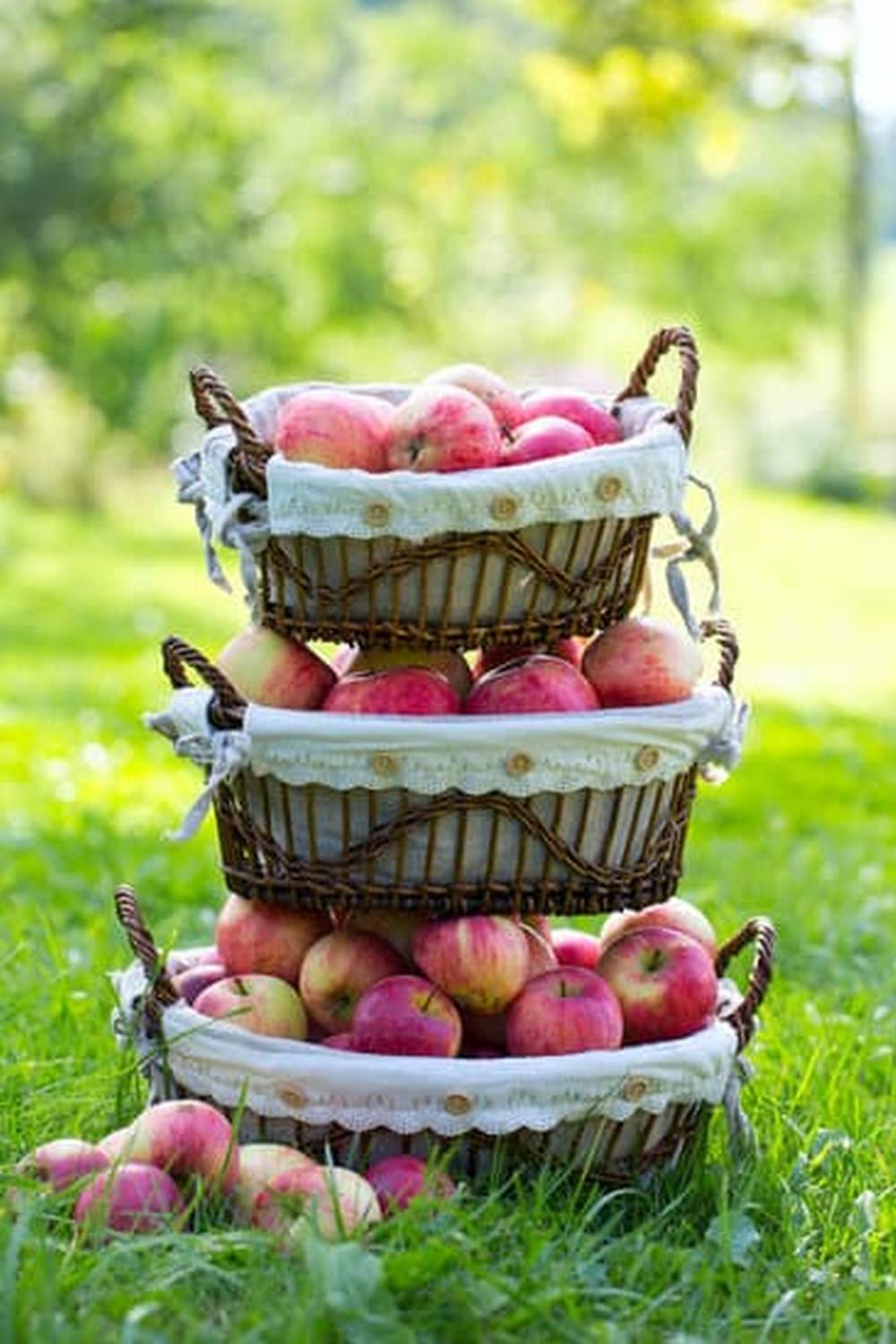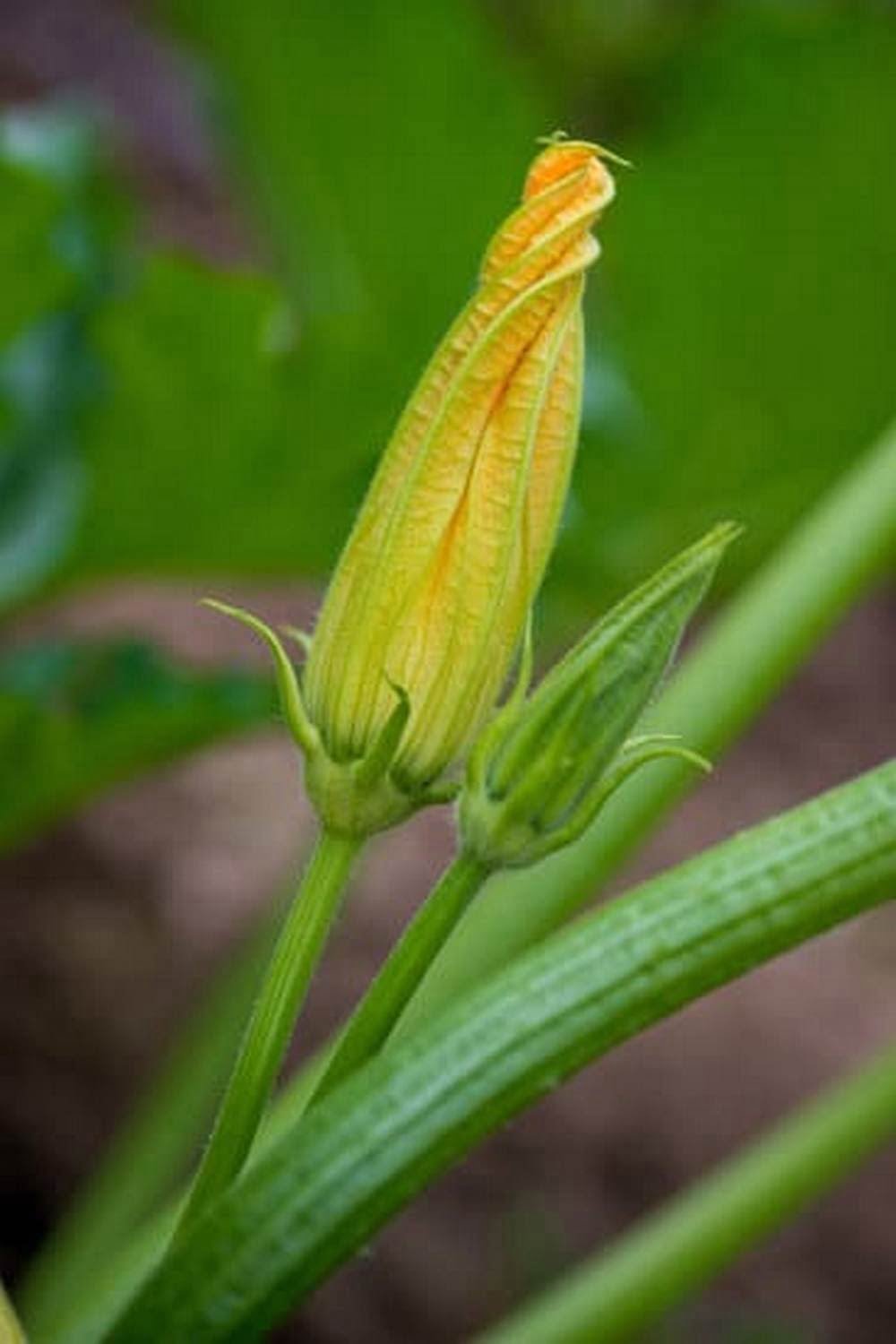Looking for inspiration and tips for vegetable gardening on a slope? Gardening on a slope can present unique challenges and opportunities. In this article, we will explore ideas and techniques for creating a successful vegetable garden on a slope.
From choosing the right vegetables to building terraces and incorporating erosion control measures, we will cover everything you need to know to get started. Whether you’re dealing with a small incline or a steep hillside, these ideas will help you make the most of your sloped garden space.
Gardening on a slope offers the chance to utilize vertical space and create a visually stunning garden that is both productive and beautiful. In this article, we will discuss how to choose the right vegetables for sloped gardening, including options that work well in raised beds and terraces. We’ll also explore ways to maximize sunlight and consider watering considerations for sloped gardens.
In addition to practical considerations, we will also look at creative landscaping ideas for sloped vegetable gardens. By incorporating these ideas into your garden design, you can create an attractive and functional space that enhances the natural beauty of your slope. Join us as we delve into the world of vegetable gardening on a slope and discover the benefits and joy it can bring.
Choosing the Right Vegetables for Sloped Gardening
When it comes to vegetable gardening on a slope, choosing the right vegetables is crucial for the success of your garden. The slope of the land can affect water drainage, soil quality, and sun exposure, so it’s important to select vegetables that are well-suited for these conditions.
One important consideration when choosing vegetables for a sloped garden is their root structure. Vegetables with shallow roots may struggle to anchor themselves in loose soil on a steep slope. Therefore, it’s best to choose plants with strong, deep roots that can hold onto the soil and prevent erosion. Examples of these types of vegetables include tomatoes, peppers, squash, and cucumbers.
Additionally, since watering can be a challenge in sloped gardens due to runoff and uneven moisture distribution, it’s advisable to select drought-resistant vegetables that can thrive in these conditions. Some excellent choices for sloped vegetable gardens include carrots, radishes, garlic, and onions. These vegetables have the ability to withstand fluctuations in soil moisture and do not require frequent watering.
Lastly, consider the sunlight exposure on your slope when selecting vegetables. Leafy greens such as lettuce and kale thrive in partial shade and can be planted on the shadier parts of the slope, while sun-loving crops like corn or eggplant should be positioned where they will receive ample sunlight throughout the day.
| Vegetable | Suitable for Sloped Gardening? |
|---|---|
| Tomatoes | Yes |
| Peppers | Yes |
| Squash | Yes |
| Cucumbers | Yes |
Building Terraces and Raised Beds for Sloped Vegetable Gardens
Terracing Techniques
One of the key challenges of vegetable gardening on a slope is preventing soil erosion and ensuring that water is properly retained. Building terraces is an effective way to address these issues. Terracing involves creating flat, level areas on the slope, which helps to retain water and prevent it from running off too quickly.
This can be achieved using various materials such as timber, stone, or even concrete blocks. By building terraces, you can create multiple flat planting areas on your sloped garden, making it easier to grow a variety of vegetables.
Raised Beds Construction
Another great option for sloped vegetable gardens is raised beds. Raised beds provide excellent drainage and prevent soil erosion while also making it easier to control the soil quality and composition. To build raised beds on a slope, consider using materials such as wood or rock to construct retaining walls that create level planting areas. This will not only make gardening more manageable but also improve the aesthetics of your garden.
Adaptation for Specific Vegetables
When constructing terraces and raised beds on a sloped garden, it’s important to consider the specific needs of the vegetables you plan to grow. Some vegetables may require deeper or wider planting areas than others, so be sure to account for these differences when planning and constructing your terraces and raised beds. Additionally, consider incorporating tiered designs in your terrace construction to provide ample space for root development and accommodate different sunlight requirements for various types of vegetables.
By integrating terracing techniques and constructing raised beds tailored to the needs of specific vegetables, you can effectively utilize a sloped landscape for productive and visually appealing vegetable gardening.
Incorporating Erosion Control Measures in Sloped Gardens
When it comes to vegetable gardening on a slope, erosion control is a crucial aspect to consider. Without proper measures in place, heavy rainfall can wash away soil and nutrients, leaving your plants vulnerable and your garden ineffective. Here are some effective erosion control measures for sloped vegetable gardens:
- Plant Ground Cover: One of the most natural ways to control erosion on a slope is by planting ground cover. Low-growing plants such as clover, thyme, or vining strawberries can help stabilize the soil and prevent runoff.
- Use Mulch: Applying mulch around your vegetable plants can greatly reduce soil erosion by absorbing the impact of heavy raindrops and preventing surface runoff.
- Install Retaining Walls: Building retaining walls along the contour of the slope can help hold the soil in place and create flat areas for planting vegetables. These walls can be made from various materials such as stone, timber, or concrete blocks.
In addition to these measures, it’s also important to consider the overall layout and design of your sloped garden to minimize erosion. By creating swales or channels that divert water away from your vegetables, you can further protect against soil loss.
Implementing these erosion control strategies will not only help maintain the integrity of your sloped vegetable garden but also contribute to its overall sustainability.
Utilizing these methods will enable you to enjoy a flourishing vegetable garden on a slope while effectively managing erosive forces that could otherwise harm your plants and soil. By integrating erosion control into your gardening practices, you can create a beautiful and productive space for growing a variety of vegetables while minimizing environmental impact.
Utilizing Vertical Gardening Techniques on a Slope
When it comes to vegetable gardening on a slope, utilizing vertical gardening techniques can be incredibly beneficial. Vertical gardening not only maximizes space but also provides better support for vining plants and helps keep the soil in place, preventing erosion. Some ideas for vertical gardening on a slope include using trellises, arbors, and even hanging planters to grow vegetables upwards rather than outwards.
One great option for vertical gardening on a slope is to use trellises. Trellises can be attached to the slope at intervals and used to support climbing vegetables such as cucumbers, peas, and pole beans. This allows these plants to grow upwards rather than outwards, making the most of limited space while also reducing the risk of soil erosion.
Another effective technique for vertical gardening on a slope is the use of hanging planters. These can be hung at different heights along the slope and planted with a variety of vegetables such as tomatoes, peppers, and herbs. Not only does this save space, but it also adds visual interest to the garden.
Incorporating vertical gardening techniques into sloped vegetable gardens not only saves space but also enhances the overall aesthetics of the garden. By utilizing trellises, arbors, and hanging planters, gardeners can make the most of their sloped landscapes while growing an abundance of fresh produce.
| Vertical Gardening Technique | Benefits |
|---|---|
| Trellises | Supports climbing plants, reduces soil erosion |
| Hanging Planters | Saves space, adds visual interest |
Maximizing Sunlight and Watering Considerations for Sloped Gardens
When it comes to vegetable gardening on a slope, maximizing sunlight and addressing watering considerations are crucial factors for a successful harvest. The angle of the slope can create uneven distribution of sunlight and water, so it is important to take proactive measures to ensure that your plants thrive in these conditions.
Sunlight Optimization
One of the main challenges of gardening on a slope is ensuring that all plants receive adequate sunlight. To maximize sunlight exposure, consider planting taller crops such as corn or trellised vegetables like cucumbers and tomatoes on the uphill side of the garden. This allows shorter crops to receive more sunshine without being shaded by taller plants. Additionally, strategically placing reflective surfaces or light-colored mulch can help bounce sunlight onto lower-lying plants.
Watering Considerations
The incline of a slope can result in uneven water distribution, with higher areas drying out faster than lower ones. When designing your sloped vegetable garden, consider incorporating drip irrigation systems or soaker hoses.
These systems can be set up to provide consistent watering throughout the entire garden, preventing erosion and ensuring that all your plants receive the moisture they need. Additionally, adding organic matter such as compost to the soil can help improve its water retention capacity, benefiting your crops especially during dry spells.
Utilizing Rainwater Harvesting
Another idea for addressing watering concerns in a sloped vegetable garden is to utilize rainwater harvesting techniques. By installing rain barrels at different levels of the slope, you can capture and store rainwater to be used for watering your plants during drier periods. This not only conserves water but also provides an eco-friendly solution for maintaining a healthy garden on a slope.
By implementing these strategies for maximizing sunlight and addressing watering considerations in your sloped vegetable garden, you can create an environment where your crops thrive despite the challenges posed by the terrain’s incline.
Creative Landscaping Ideas for Sloped Vegetable Gardens
When it comes to vegetable gardening on a slope, creative landscaping ideas are essential for maximizing both the aesthetic and functional aspects of your garden. Here are some innovative ideas to consider:
- Use retaining walls: Constructing sturdy retaining walls can help create flat areas for planting, prevent erosion, and provide structural support for your sloped garden.
- Plant in tiers: Utilize the natural inclination of the slope by creating tiered planting beds. This not only adds visual interest but also helps with water drainage and soil stability.
- Utilize natural stone or rocks: Incorporating natural stone or rocks into the landscape can add texture and dimension to your sloped garden. Consider using them to create pathways, define borders, or as decorative elements throughout the space.
In addition to these landscaping ideas, you can also incorporate hardscaping elements such as gravel walkways, steps, and trellises. These features not only enhance the overall design of your sloped vegetable garden but also make it more accessible and manageable for maintenance.
Another creative landscaping idea for sloped vegetable gardens is embracing the beauty of native plants and wildflowers. These plants are often well-adapted to the local climate and soil conditions, making them an excellent choice for adding diversity and attracting beneficial insects to your garden.
With these landscaping ideas in mind, you can transform your sloped vegetable garden into a visually stunning and productive space that harmoniously blends with its natural surroundings. Whether you choose to incorporate retaining walls, tiered planting beds, natural stone elements, or native plants, creative landscaping is key to making the most of your unique gardening space.
Maintenance Tips for Sustaining a Healthy Sloped Vegetable Garden
Maintaining a healthy sloped vegetable garden requires consistent care and attention to ensure the best possible harvest. One important aspect of maintenance is regular weeding. Weeds can easily take hold on a sloped garden, competing with vegetables for nutrients and sunlight. To prevent weed growth, it’s essential to regularly remove any unwanted plants and use mulch to inhibit their growth.
Another crucial maintenance tip for sustaining a healthy sloped vegetable garden is proper watering. Sloped gardens can present challenges when it comes to irrigation since water tends to run off quickly. To combat this issue, consider installing a drip irrigation system or strategically placing soaker hoses to ensure that your vegetables receive adequate water without excessive runoff.
Additionally, pest and disease management are key components of maintaining a thriving sloped vegetable garden. Regularly inspect your plants for signs of pests or diseases, and promptly address any issues that arise. Consider using natural pest control methods, such as companion planting and beneficial insect attractants, to minimize the need for chemical interventions.
By implementing these maintenance tips, you can sustain a healthy sloped vegetable garden and enjoy bountiful harvests throughout the growing season. Taking proactive steps to address common challenges like weed control, watering, and pest management will help you maintain a productive and beautiful garden on a slope.
Conclusion
In conclusion, vegetable gardening on a slope presents its own set of challenges, but the rewards far outweigh the effort. The benefits of utilizing the natural contours of your landscape for vegetable gardening are numerous.
Not only does it allow for better drainage and sunlight exposure, but it also creates a visually appealing and unique garden space. By choosing the right vegetables, building terraces and raised beds, incorporating erosion control measures, utilizing vertical gardening techniques, maximizing sunlight and watering considerations, and implementing creative landscaping ideas, you can create a thriving vegetable garden on a slope.
One of the most rewarding aspects of vegetable gardening on a slope is the opportunity to work with nature to create a beautiful and productive garden. There is a sense of accomplishment in successfully overcoming the challenges posed by sloped terrain to grow your own fresh produce. Additionally, maintaining a sloped vegetable garden provides an excellent workout while offering mental relaxation and stress relief through connecting with nature.
The joy of harvesting fresh, organic vegetables from your sloped garden cannot be overstated. From the satisfaction of knowing exactly where your food comes from to the enhanced flavor and quality compared to store-bought produce, vegetable gardening on a slope provides a sense of fulfillment that is unmatched. So, if you have access to sloped land, consider exploring the possibilities of sloped vegetable gardening and enjoy the multitude of benefits it offers.
Frequently Asked Questions
Can You Grow a Vegetable Garden on a Slope?
Yes, it is possible to grow a vegetable garden on a slope. However, it requires proper planning and techniques to ensure the soil doesn’t erode and the plants have access to water and nutrients.
What Crops Grow Best on a Slope?
Crops that grow best on a slope are those with deep roots that can help stabilize the soil, such as potatoes, sweet potatoes, and corn. These crops also require less maintenance and are better suited for sloped terrain.
How Do You Grow Plants on a Steep Slope?
Growing plants on a steep slope requires terracing or creating level planting areas to prevent soil erosion. This can be done using retaining walls or building up the soil with rocks or other materials. It’s also important to consider water management and ensure proper irrigation for the plants.

If you’re looking to get into vegetable gardening, or are just looking for some tips on how to make your current garden better, then you’ve come to the right place! My name is Ethel and I have been gardening for years. In this blog, I’m going to share with you some of my best tips on how to create a successful vegetable garden.





